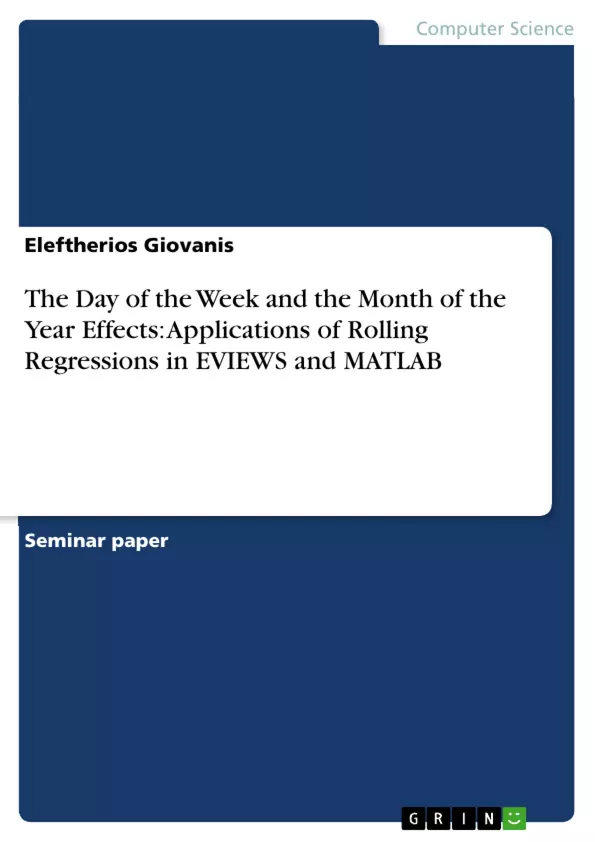In this paper we examine the calendar anomalies in the stock market index of Athens. Specifically we examine the day of the week and the month of the year effects, where we expect negative or lower returns on Monday and the highest average returns on Friday for the day of the week effect and the higher average returns in January, concerning the January effect. For the period we examine we found insignificant returns on Monday, but significant positive and higher average returns on Friday. Also our results are consistent with the literature for the month of the year effect, where we find the highest average returns in January. Furthermore we estimate with ordinary least squares (OLS) and symmetric and asymmetric Generalized Autoregressive Conditional Heteroskedasticity (GARCH) rolling regressions and we conclude that the week day returns are not constant through the time period we examine but are changed. Specifically, while in the first half-period of the rolling regression there are negative returns on Mondays so we observe the day of the week effecting, in the last half-period of the rolling regression Friday presents the highest returns, but the lowest returns are reported on Tuesday and not on Monday, indicating a change shift in the pattern of the day of the week effect. Full programming routines of rolling regressions in EVIEWS and MATLAB software are described.
Inhaltsverzeichnis (Table of Contents)
- Introduction
- Methodology
- The estimated model
- Symmetric and Asymmetric Generalized Autoregressive Conditional Heteroskedasticity-GARCH
- Data
- Results
Zielsetzung und Themenschwerpunkte (Objectives and Key Themes)
This paper investigates calendar anomalies in the Athens Stock Market index, specifically focusing on the day of the week and month of the year effects. The study examines the expectation of negative returns on Monday and higher returns on Friday for the day of the week effect, and higher average returns in January for the month of the year effect. The paper uses rolling regressions to analyze the stability of these effects over time.
- Day of the Week Effect
- Month of the Year Effect
- Rolling Regressions
- Generalized Autoregressive Conditional Heteroskedasticity (GARCH) Models
- Market Efficiency
Zusammenfassung der Kapitel (Chapter Summaries)
- Introduction: This chapter provides a brief overview of previous studies on calendar effects, highlighting the day of the week and month of the year effects, and outlining the paper's objectives and methodology.
- Methodology: This chapter presents the theoretical models used to examine the day-of-the-week and month-of-the-year effects. The models are initially estimated with OLS and then with GARCH models to account for heteroskedasticity and autocorrelation.
- Data: This chapter describes the data used in the analysis, which includes daily and monthly data on the General Exchange Stock Market Index of Athens from January 2nd, 2002 to October 30th, 2007.
- Results: This chapter presents the findings of the OLS and GARCH estimations. The results reveal the presence of significant Friday returns, suggesting a potential deviation from market efficiency. The chapter also analyzes the stability of the calendar effects through rolling regressions, which indicate shifts in the patterns of the day-of-the-week and month-of-the-year effects over time. This chapter does not contain the conclusion or final chapter to avoid spoilers.
Schlüsselwörter (Keywords)
The primary keywords and focus topics include: calendar anomalies, day of the week effect, month of the year effect, rolling regressions, GARCH models, market efficiency, Athens Stock Market, empirical research, statistical analysis.
- Quote paper
- Eleftherios Giovanis (Author), 2008, The Day of the Week and the Month of the Year Effects: Applications of Rolling Regressions in EVIEWS and MATLAB, Munich, GRIN Verlag, https://www.grin.com/document/146637



